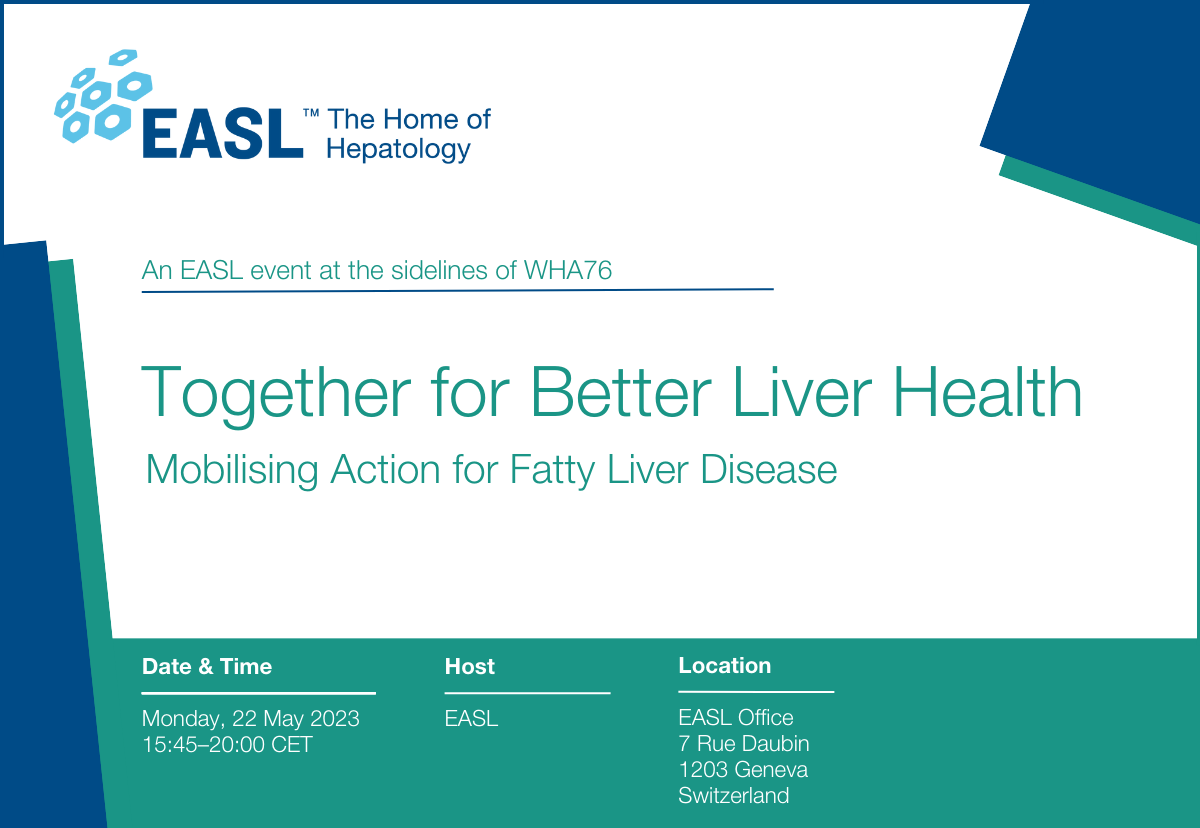Together for Better Liver Health
EASL`s vision is to beat liver disease. This event, held in partnership with AASLD, ALEH, APASL and SOLDA on the sidelines of the 76th World Health Assembly (WHA76) represents the first-time policymakers, Permanent Mission Representatives to the UN in Geneva, WHO staff, thought leaders and people affected by liver disease have come together to strategise on how best to mobilise a coordinated response to fatty liver disease.
The event builds upon WHA76 agenda item 11.2 which includes discussions on policy options and cost-effective interventions for the prevention and control of noncommunicable disease (NCDs). By convening stakeholders from across the NCD space, this invitation-only event will provide a platform to raise the profile of fatty liver disease, recognise the urgent need for action, and to forge a collective path forward.
The emerging public health threat of fatty liver disease
Fatty liver disease is the most prevalent liver disease in history. Estimates show the disease afflicts more than 1 in 3 adults globally and 10% of children, with the burden expected to grow further in the years ahead. Left unchecked the disease can progress, ultimately leading to cirrhosis and liver cancer. In the past decade alone the incidence of liver cancer associated with fatty liver disease has increased substantially. In the UK for instance, fatty liver disease is the major cause of liver cancer. Fatty liver disease shares common metabolic risk factors with diabetes, obesity, and cardiovascular disease: addressing it effectively will require better integration with current public health policies around the detection and treatment of NCDs.

The urgency to act
Despite the ubiquity of fatty liver disease in society, most people have never heard of it. From family doctors and non-liver health specialists to the public, fatty liver disease remains largely unknown. The scale of the fatty liver disease crisis comes at a time when health systems are already burdened by the increasing care needs of people living with NCDs, which are responsible for 70 per cent of all global deaths. In light of this the Sustainable Development Goal of universal health coverage (UHC) is more important than ever and one that will be addressed very publicly at the forthcoming UN High Level Meeting on UHC in New York in September.
Together for better liver health: mobilising action for fatty liver disease
Past successes in the NCD field have demonstrated that collaboration must sit at the centre of efforts to address the growing challenge of fatty liver disease. These efforts must be on multiple fronts: strengthening health systems, scaling prevention efforts and giving affected communities a seat at the decision-making table.


